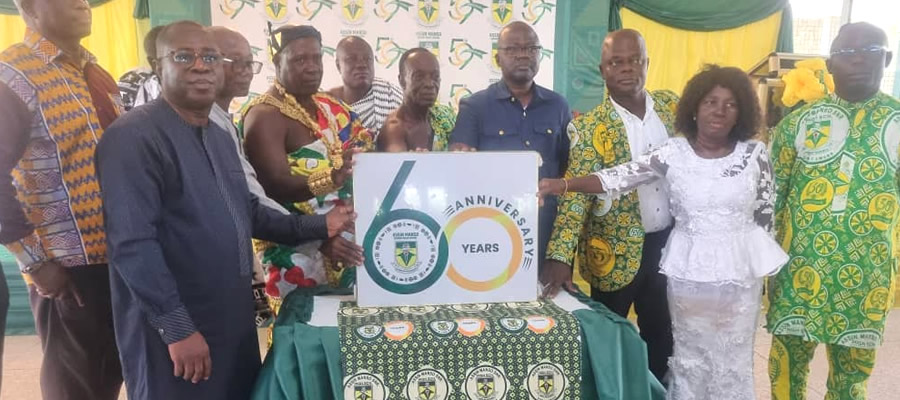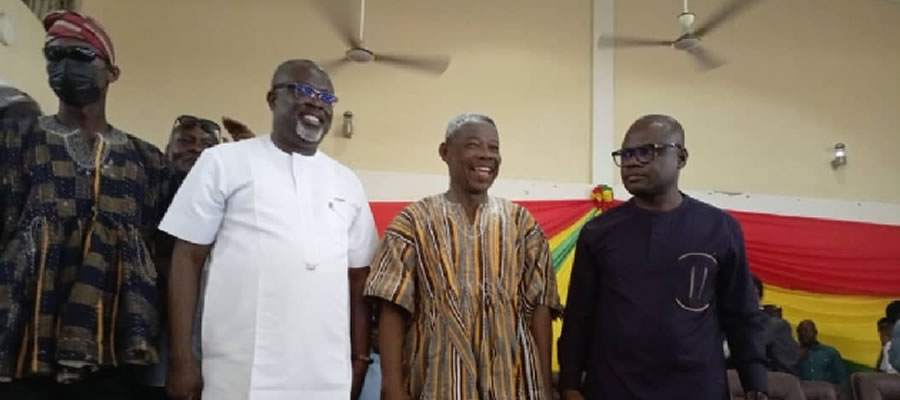

The water facilities in the municipality are made up of the following: hand dug wells, bore holes and small town piped water system. The small town piped water system can found in the big towns such as Assin Fosu township, Assin Juaso, Assin Nyankumase, Assin Akropong, Assin Wurakes and Assin Brofoyedur/Aponsie. Whiles the remaining communities/villages get water from bore holes and hand dug wells. The municipality also has two main rivers, namely; Offin and Betinsin but the water is contaminated hence the citizenry do not use for cooking and drinking
ENVIRONMENTAL SANITATION
About 85.3% of the people use public dumps (Communal Container) with 11.1% dumping indiscriminately while 3.6% of households use or patronize house to house waste collection. There is also poor settlement planning in the municipality which is manifested by haphazard arrangement of buildings in various locations.
Water is an indispensable commodity in human life and contributes in the determination of the health status of the user population. The major sources of water used in the municipality are boreholes, hand-dug wells and rivers, streams and ponds. Hand-dug wells are the predominant source of water for the inhabitants.
Human resource development
The supply of potable water is inadequate in the Municipality. None of the settlements has access to pipe borne water. The only potable water available is borehole which is not adequate to meet the demand of the population. The other forms of water are hand-dug wells, streams, rivers and ponds. The quality of water from these sources of water is rivers and ponds. This has a bearing on the incidence of water-related diseases (e.g. bilharzias) excreta or human waste disposal, garbage disposal, and liquid household waste and storm water disposal.
A survey done by the Assin Foso Municipal Water and Sanitation Team revealed that majority of the households (82%) do not use proper drainage facilities in disposing off waste water/liquid. Only about 18 percent use drains in liquid waste disposal. Of the 18 percent, about 93.1 per cent live in the urban settlements especially Foso and Bereku. From the foregoing, it could be deduced that drainage facilities are inadequate and the available ones are in deplorable conditions.
The disposal of solid waste is another problem that is engulfing the especially in Foso Township and Bereku. The survey conducted indicated that about 36 per cent use well-organized refuse dumps, 51 per cent use undeveloped refuse dumps, 11 per cent use open pit and only about 2 per cent burn their refuse. 73.2 per cent of the people travel between 10m-300m to dispose of refuse, thus the reason for dumping anyhow. However, many refuse dumps are not well organized and that run-offs pollute the various water bodies thereby posing water related diseases like bilharzias and cholera. The types of toilet facilities that are used in the municipality include the following:
Pit latrine
K.V.I.P
WC
Aqua Privy
VIP
Mozambique
Free Range
The use of WC is on the minimal since there is no pipe borne water systems in the entire Municipality. About 49 per cent of the population use Pit latrine, 44 per cent use K.V.I.P, Aqua Privy, Mozambique and WC Toilets. The remaining 7 per cent resort to open defecation, which poses serious health hazards to the inhabitants. The survey further revealed that only about 22 per cent of the entire Municipality population haw toilet facilities in their houses. The remaining 78 per cent use public places of convenience, which in most cases, are not properly maintained. This makes people resort to free range. The discussion on Human Resource Development has brought to the fore the following: They suffers from inadequate potable water supply especially during the dry season. The assembly is suffering from inadequate health personnel and health facilities.
Date Created : 4/22/2025 1:45:31 AM











 facebook
facebook
 twitter
twitter
 Youtube
Youtube
 +233 593 831 280
+233 593 831 280 0800 430 430
0800 430 430 GPS: GE-231-4383
GPS: GE-231-4383 info@ghanadistricts.com
info@ghanadistricts.com Box GP1044, Accra, Ghana
Box GP1044, Accra, Ghana